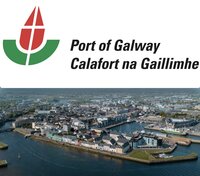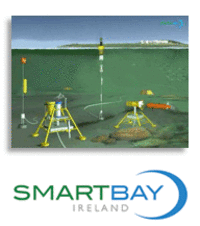


Local Sponsors
-
Port of Galway
Harbour Office. New Docks Galway, Ireland
The Galway Harbour Company operates a 31 berth pontoon marina in the confines of the Port of Galway. An additional 4 berths are available along a 60 metre pontoon/walkway. Freshwater and electrical power is available at the pontoons. Power cards can be obtained from the Harbour office and from Centra, Raven’s Terrace (open 7:30am-10:00pm).
-
SmartBay
Marine Institute Headquarters. Rinville Oranmore, Co. Galway
The vision is to provide a marine based research, test and demonstration platform which will encourage leading edge researchers and industry consortia to collaborate together on important commercial and environmental research.
More information
Many thanks to The Galway Harbour Master & The Marine Institute for facilitating this camera's location . SmartBay Galway is a nationally recognized research infrastructure project that encompasses a comprehensive network of buoys, seafloor cables, and other essential elements of infrastructure. These components support a diverse array of sensors, information systems, telemetry, and communication technologies, collectively forming the foundation for in-situ, real-time oceanographic monitoring. This innovative initiative enables scientists and researchers to gather crucial data and insights directly from the marine environment.The historical connection between Galway and the sea reaches far beyond the pages of conventional history books. Like any great city, Galway possesses a captivating narrative, particularly in the story of the fourteen tribes that propelled the city to a prosperous and internationally renowned golden age. This legacy from the past continues to be cherished and honored in the present day.Situated on the western coast of Ireland, Galway Docks occupies a strategic location northeast by east of the Aran Islands, which encompass Galway Bay. As the heart of Ireland's third largest city, this commercial harbor provides pontoon berths within a tidal basin for leisure craft, along with designated areas for vessels awaiting changes in the tide outside the harbor.Galway Dock, enclosed within a secure gated wet-dock, offers complete protection from various weather conditions. Access to the dock is straightforward, as the approaches through Galway Bay benefit from partial shielding against the powerful Atlantic swell, thanks to the presence of the Aran Islands. Furthermore, the channel leading to the wet dock is well illuminated and marked, ensuring safe and efficient navigation during both daytime and nighttime operations. The coastal regions of Galway Bay have received the esteemed designation of a Special Area of Conservation. This recognition is attributable to the remarkable diversity of vital habitat types present in the area, encompassing intertidal mud and sandflats, various littoral habitats, coastal lagoons, saltmarshes, turloughs, vegetated cliffs, calcareous grassland, and limestone pavements. Galway Bay serves as a significant habitat for common seals and otters, while also holding immense ornithological value as a site frequented by seabirds, waders, and waterfowl.
The lagoons within this region possess a slightly brackish nature and support a rich array of plant life. Noteworthy flora found in these lagoons include tasselweed and specialized algae such as Chaetomorpha linum, Chara canescens, and Lamprothamnion papulosum. Additionally, there are fen areas characterized by the dominance of great fen-sedge and black bog-rush, accompanied by common reed, purple moor-grass, bogbean, and long-stalked yellow-sedge. Furthermore, the turlough at Ballinacourty forms a temporary lake spanning approximately 25 hectares (60 acres) during the winter season. Wetland species near the exit-hole of the turlough include amphibious bistort, marsh bedstraw, and marsh cinquefoil, along with silverweed, water mint, and creeping bent in the less frequently flooded areas near the edge. The rest of the area is predominantly dominated by various species of sedges. The flanks of certain low drumlin hills to the west of Galway City boast grasslands abundant with orchids. These grasslands provide a favorable environment for calcium-loving species, including kidney vetch, harebell, spring gentian, yellow-wort, greater knapweed, common spotted-orchid, lesser twayblade, pyramidal orchid, and some scrubby juniper. Notably, the saltmarshes in the area possess an unusual feature where dwarf brown seaweeds coexist alongside notable species like thrift, lax-flowered sea lavender, red fescue, common scurvygrass, common saltmarsh-grass, saltmarsh rush, and sea rush, adding to the biodiversity of the vegetation found there



